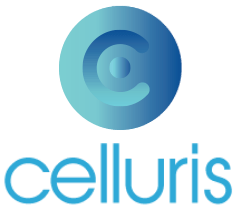The CAR-T therapy story spans over six decades of research. The first T cells containing a chimeric antigen receptor (CAR, acronym in English) were developed in Israel in 1987. In 2009, American scientists were able to validate the effectiveness of this therapy in treating leukemia. The technology received approval from the Food and Drug Administration (FDA), the American governmental agency responsible for the regulation of food, drugs, etc., in 2017; and it is currently available in several countries, including Brazil.
An advantage of CAR-T therapy is its customization, as it uses the patient’s own cells. Another favorable point is that CAR-T therapy is specifically targeted at cancer cells, preserving healthy cells.
However, like any aggressive treatment, there are points of concern. For instance, safety is considered crucial in CAR-T cell treatment because this approach involves the genetic manipulation of the patient’s immune system cells. There are also side effects, for example, Cytokine Release Syndrome (CRS).
Safety in the genetic modification of T cells
The genetic manipulation of cells in CAR-T treatment (T Cells with Chimeric Antigen Receptors) involves modifying the patient’s own T cells to express a specific chimeric antigen receptor (CAR) for cancer cells. It all starts with collecting T cells from the patient, which are extracted from the individual through a process called leukapheresis, similar to blood donation. The T cells are isolated from the collected blood and then activated in the laboratory. This is done by exposing the T cells to specific proteins, such as antibodies, which stimulate their activation. After collection, T cells undergo genetic modification. This is generally done by introducing a viral vector carrying the CAR gene. The most common viral vectors used are retroviruses or lentiviruses. These viruses are genetically modified to carry the CAR’s genetic material but are harmless to the body. After genetic modification, the T cells begin to express the CAR on their surface.
These modified CAR-T cells are grown in large quantities in the laboratory. Meanwhile, the patient is prepared to receive the infusion of their own CAR-T cells. The CAR-T cells are then infused back into the patient through an intravenous transfusion. Once introduced, they encounter cancer cells expressing the specific antigen recognized by the CAR, thus activating and starting to attack the cancer cells. The complexity of the process requires the treatment to be performed by highly specialized professionals and clinics proficient in the technique.
CAR-T cells and toxicity
After the T cell infusion, a new phase begins. Patients are closely monitored for potential side effects, such as Cytokine Release Syndrome and neurological toxicities. Cytokine Release Syndrome (CRS), also known as Cellular Therapy-Induced Cytokine Release Syndrome (CARS-CR), is a systemic inflammatory response that can occur as a side effect in CAR-T cell therapy. In other words, robust activation of T cells during CAR-T treatment can trigger an exaggerated immune response, leading to massive cytokine release in the body. Cytokines are proteins involved in communication between immune system cells and play a significant role in regulating the inflammatory response. When there is an excessive release of cytokines, a cascade of events occurs that can lead to severe systemic symptoms, such as fever, hypotension, respiratory difficulties, and in more extreme cases, shock syndrome. This intense inflammatory response is known as Cytokine Release Syndrome. To manage CRS associated with CAR-T cell therapy, patients are closely monitored during and after treatment. Additionally, supportive measures, such as administering anti-inflammatory and immunosuppressive drugs, may be taken to control symptoms. Effective management of CRS is crucial to ensure the safety and success of CAR-T cell therapy.
Other reported side effects
In addition to Cytokine Release Syndrome (CRS), CAR-T cell therapy may be associated with other side effects, including neurological toxicity. Neurological side effects vary in severity and may include: confusion, drowsiness, disorientation, or even loss of consciousness. This condition may be transient and is generally associated with the severity of the systemic inflammatory response. Among the side effects, patients may also report a type of neurological dysfunction, including behavioral changes, seizures, and visual disturbances. Typically, it is reversible with appropriate treatment. It is important to highlight that these side effects may vary among patients, and not all individuals undergoing CAR-T cell therapy will experience these complications.
In which cases has the treatment shown effectiveness? So far, CAR-T therapy has demonstrated remarkable efficacy in cases of acute lymphoblastic leukemia (ALL), diffuse large B-cell lymphoma (DLBCL), multiple myeloma, and other hematological tumors. Patients who do not respond to conventional treatments often see positive results with CAR-T therapy.
Patient safety
Although the persistence of CAR-T cells in the body is desirable to maintain long-term efficacy, it may also contribute to prolonged side effects. It is essential to understand and safely manage cell persistence. Patient safety lies in long-term monitoring, especially concerning potential late side effects and recurrence. Continuous communication between the patient and the medical team is fundamental. It is crucial for patients considering CAR-T therapy as a treatment option to thoroughly discuss the risks and benefits with their oncologists and to be closely monitored during and after treatment to ensure a safe and effective approach. Safety is a constant priority in the evolution of this innovative therapy.
Pioneering in CAR-T technology
Specialized in cell therapy, Celluris was the first company to develop CAR-T technology in Brazil. To this day, it is the most dedicated to this field of study, working to offer personalized therapies to patients. To learn more about this therapy, visit the website.


